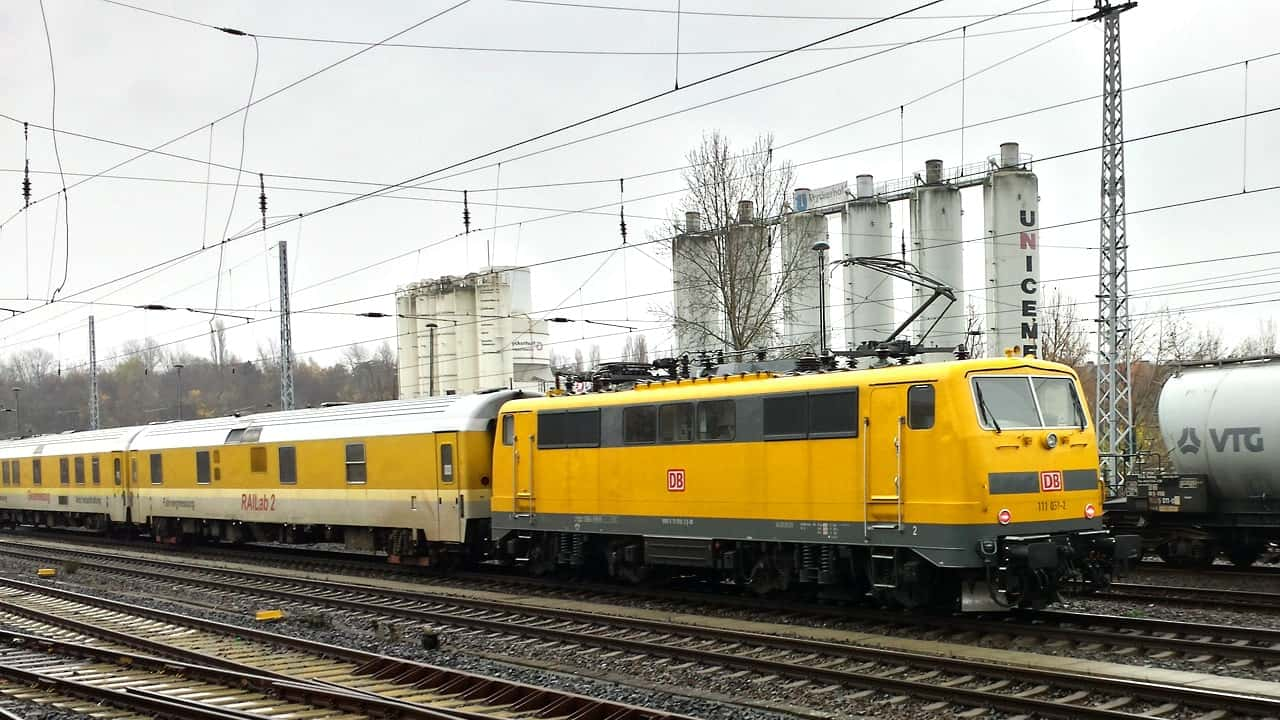DB Class 111 - The express loco for regional and local traffic
Search
In the early 1970s, the production of express train locomotive DB Class 110 came to an end, but the demand for high-speed electric locomotives remained. Thus, the German Federal Railroad decided to develop a successor series – the DB Class 111. Here, proven parts of its predecessor were used. The four-axle locomotives, which reach a speed of 160 kilometers per hour, were manufactured between 1974 and 1984. A total of 227 machines were produced.
Compared to its predecessor series, the 111 series was equipped with newer bogies, so that the smoothness was improved at high speeds. The newly developed DB-Einheitsführerstand now also for the engine driver better working conditions were guaranteed. The most important construction sites were the Krauss-Maffei plants, but also Henschel and Krupp as well as Siemens, AEG and BBC. One still used the conventional AC technology.
| Manufacturer: | AEG, BBC, Henschel, Krauss-Maffei, Krupp, Siemens |
| Length: | 16,750 mm |
| Numbering: | 111 001-227 |
| Weight: | 83 t |
| Years of construction: | 1974-1984 |
| Top speed: | 160 km/h |
| Retirement: | since 2013 |
| Propulsion: | Rubber ring spring |
| Traction motors: | 4 |
| Power system: | 15 kV 16.7 Hz AC |
| Number: | 227 built 211 in stock, of which 42 parked |
| Power: | 3620 kW |
| Train protection: | Sifa, PZB 90, LZB (partial) |
| Brake: | Knorr air brake; electric brake (continuous power: 3,600 kW) |
| Axle formula: | Bo'Bo' |
| Interesting facts |
|---|
| The electric locomotive DB Class 111 belongs to the locomotives with the axle formula Bo'Bo'. The Bo'Bo' axle formula uses two individually driven axles in each of two different frame bogies. More interesting facts |
The area of application and the whereabouts of the DB Class 111
The E-locomotive DB Class 111 is mainly used in regional and suburban traffic, partly also in long-distance traffic. Since 1998, however, the use of long-distance passenger transport has been decreasing. For a short time, it was even used in the 1980s for S-Bahn traffic. Only in 1997, the last locomotive of the DB Class 111 series was replaced in this area. However, some of the machines from 2010 to 2013 were put back into operation by the S-Bahn Nuremberg, due to which the current model series 442 was not yet approved.
Since 2013, the station of the DB series 111 series is located in Ludwigshafen. It has great advantages due to its technical versatility and its high speed potential. Particularly well known are their double-decker cars. Now, the locomotives of the DB Class 111 increasingly retired and scrapped. When, finally, none of these machines can be found on the tracks, it is still unclear.

